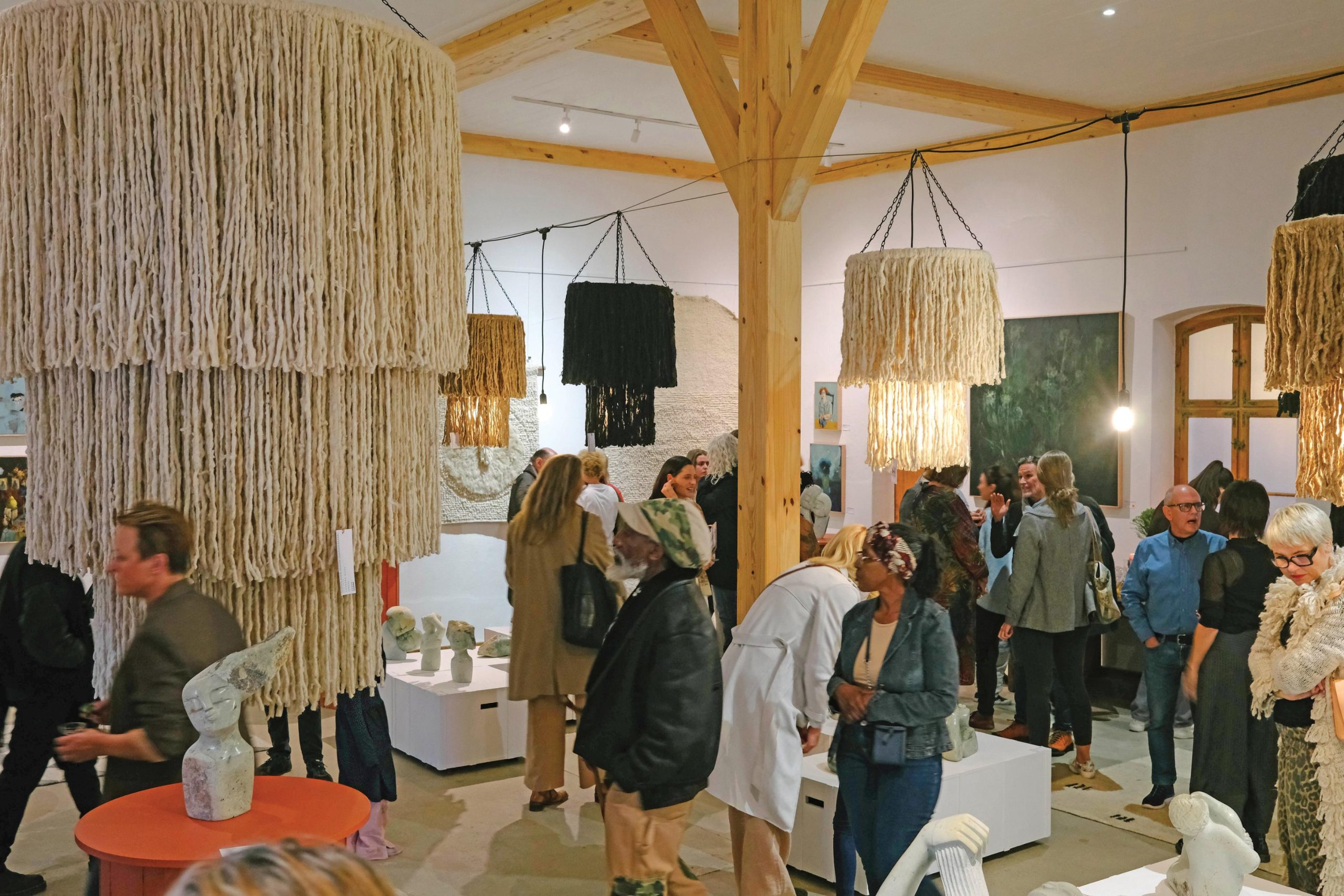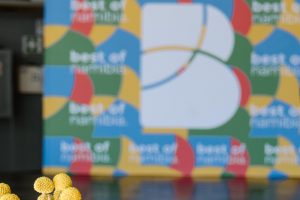
Debmarine Namibia Champions Future Innovators
Debmarine Namibia proudly sponsors the 2025 National Science Fair, Quiz, and Mathematics Olympiad, inspiring learners nationwide to pursue STEAM careers and drive innovation.

Text Madeleen Duvenhage | Photography Chris Botha
BELLHAUS Atelier & Galerie recently opened its doors to a compelling exhibition showcasing the work of three visionary artists: Heidi Louw, Kudzanai Katerere and Marcii Magson. Their creations – ranging from fluid brushstrokes and intricate weavings to sculptural forms – are intertwined in a seamless visual dialogue. At the heart of the exhibition is KOLO, a name inspired by a traditional Slavic dance that evokes unity, joy and collective movement. This evocative title sets the tone for an artistic journey that transcends borders and connects across generations and genres.
“It all began with wool, an ancient craft and salt-of-theearth people in a remote place called Stampriet, the unlikely source of my inspiration. Some may call it love at first fibre,” says Magson. “The first time I visited The Mill,” she recalls, “I was so inspired I stayed up all night, unable to contain the flow of creativity.” The Mill, located in Stampriet, is an establishment dedicated to revitalising Namibia’s Swakara wool industry while creating employment opportunities for local men and women. Their commitment to quality is evident in their refusal to compromise on methods, costs or labour, upholding rigorous standards to produce exceptional, heirloom-quality carpets.
Surrounded by raw, spun wool and an array of woven textile samples, Magson discovered new patterns with an effortless flow. The rhythmic song of the loom, the swift skilled hands, the rise and fall of an ancient craft and the earthy tones of thread were deeply soul-stirring, yet strangely familiar. Known for her bold, visceral patterns, this experience gave Magson a new and unexpected voice. The Mill’s creations included inventive three-tier wool chandeliers dangling from the ceiling, but it was the downy, expansive carpets which drew my attention. “In the intricate tapestries of life, I see textiles, particularly carpets, which, as silent storytellers, we get to hold and nurture throughout seasons in life.” Which is why Magson envisions her Swakara carpets as living repositories of graphical narratives, meticulously crafted to tell a story through pattern and texture.
Like the kolo dance – a concept that resonates deeply within Magson’s circular-design library – the recurring circular motifs found throughout the textile designs convey connection and harmony. Through these forms, themes of unity are explored, alongside the comforting and often confounding cyclical nature of life itself. More than just decorative items for a living room, these works are visual, layered poems where tradition and modernity are thoughtfully intertwined.
Katerere hails from Zimbabwe, known as the “House of Stone” and home to a sculpting tradition dating back to the sixth century. Sculpting for royalty was usually passed down through the paternal line, from father to son. But Katerere, raised by his elderly grandparents and struggling to make ends meet, taught himself. With handmade tools and raw materials accessed directly from the ground, he broke away from cultural expectations and set out to create a legacy of his own. “I first came to Namibia in 2015 and immediately fell in love,” he says. The feeling was mutual. This exhibition marks ten years since Katerere first shared his sculptures with Namibia. He now presents his Special Collection, described as “a timeless sanctuary that houses a carefully curated selection of sculptures reflecting pivotal moments from my past exhibitions”. The sculptures, shaped by faith and persistence, express tenderness, affection and his unwavering belief in God.
Heidi Louw’s acrylic paintings, with their dramatic interplay of shadow and light, are reminiscent of the Dutch master Rembrandt – just imagine the European Renaissance infused with a surrealist, contemporary twist. Her work captures daily moods and domestic rituals, exploring the contrast between ordinary delight and inevitable decay. These are scenes that one can readily identify and recall, yet they pull you into an intangible mystery. “I am deeply drawn to the quiet yet profound drama found within interiors, personal objects and figures paused in moments of contemplation or transformation. Through my paintings, I strive to breathe life into these suspended moments,” says Louw. Her work is an invitation to linger and to notice the beauty held within hidden, still fragments of life.
Much like the kolo dance, these three artists – each uniquely gifted and established in their respective disciplines – came together in an effortless choreography that never clashes but instead complements and enhances one another’s work.

Debmarine Namibia proudly sponsors the 2025 National Science Fair, Quiz, and Mathematics Olympiad, inspiring learners nationwide to pursue STEAM careers and drive innovation.

Namibia’s energy moment is here. By aligning mining with emerging oil & gas, shared infrastructure and smart investment can drive growth, create jobs and build

Celebrate the Best of Namibia 2025! Discover the winning restaurants, services, personalities, and places that make Namibia shine, as chosen by your votes.

Discover how Namdeb’s seawall innovation protects Namibia’s southern coastline and enables safe, sustainable diamond mining through engineering, technology and teamwork.